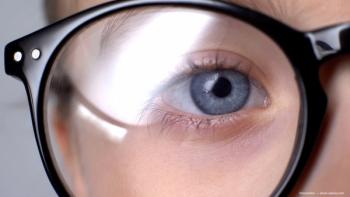
Keeping Sjögren’s syndrome on the radar
Since dry eye is an early presenting sign, eye-care providers need to maintain a high index of suspicion for Sjögren’s syndrome in patients with clinically significant dry eye.
Take home
Since dry eye is an early presenting sign, eye-care providers need to maintain a high index of suspicion for Sjögren’s syndrome in patients with clinically significant dry eye.
By Cheryl Guttman Krader; Reviewed by Esen Akpek, MD
Baltimore-Ophthalmologists who see patients with dry eye must maintain an index of suspicion for Sjögren’s syndrome so that affected individuals are properly diagnosed and treated, said Esen Akpek, MD.
“Sjögren’s syndrome is most often associated with dry eye and dry mouth,” said Dr. Akpek, professor of ophthalmology and rheumatology; director, Ocular Surface Disease and Dry Eye Clinic, and associate director, Johns Hopkins Jerome L. Greene Sjögren's Syndrome Center, The Wilmer Eye Institute at Johns Hopkins University School of Medicine, Baltimore.
Slit lamp examination of a paracentral sterile corneal necrosis in a patient with Sjögren's syndrome and associated dry eye. In addition, the presence of dry mouth or other systematic complaints associated with other tissue damage from Sjögren's syndrome may be a useful predictor. (Image courtesy of Esen Akpek, MD)
“While those features are its most common early manifestations, Sjögren’s syndrome is a multisystem autoimmune disease that can result in significant morbidity from joint and internal organ involvement as well as mortality through its association with lymphoma,” Dr. Akpek said.
Early recognition and treatment are important for minimizing disease progression, Dr. Akpek noted. Unfortunately, although Sjögren’s syndrome is one of the most common autoimmune diseases, it is also one of the most underdiagnosed.
Lack of suspicion for Sjögren’s syndrome-fueled by underappreciation of its true prevalence-is one reason why the disease is underdiagnosed or not diagnosed before the development of permanent tissue damage, Dr. Akpek said.
Affected patients often present to a primary eye-care provider because of their dry eye and do not receive the evaluation that would lead to a proper diagnosis.
“It is the responsibility of ophthalmologists and optometrists who see patients with dry eye complaints to raise the suspicion of Sjögren’s syndrome and begin the work-up just as it would be done if the patient presented with uveitis,” Dr. Akpek said. “Dry eye is an inflammatory eye disorder just like uveitis and it doesn’t matter that one affects the ocular surface and the other the inside of the eye.”
Though there is a need for guidelines that might direct practitioners in identifying which patients deserve further evaluation, available studies indicate that presence of dry mouth or other systemic complaints associated with other tissue damage from Sjögren’s syndrome, as well as a family history of autoimmune disease, are useful predictors.
The possibility of Sjögren’s syndrome should be considered in any patient with clinically significant dry eye described by the presence of ocular surface staining, or a low Schirmer test score, or a high tear film osmolarity.
Then, a review of systems should be performed and patients should be asked about presence of dry mouth, joint pain, and a family history of autoimmune disease.
Any patient with these findings should have laboratory testing to diagnose Sjögren’s syndrome.
A newer test is now available that identifies antibodies to salivary gland protein, carbonic anhydrase 6, and parotid secretory protein in addition to the traditional SSA, SSB, ANA and RF (Shen L et al. Novel autoantibodies in Sjogren's syndrome. Clin Immunol. 2012;145:251-255).
Approach to management
Patients whose dry eye is diagnosed with Sjögren’s syndrome should be treated aggressively with anti-inflammatory treatment and followed at frequent intervals-even if their dry eye does not seem too severe, because they are at risk for developing extraglandular ocular complications.
“In a retrospective review of 183 patients with primary Sjögren’s syndrome seen at our institution between 1999 and 2013, we found that one-third had extraglandular ocular findings,” Dr. Akpek said. “Almost half of those patients had significant, vision-threatening disease, including corneal ulcer/infiltration, corneal melt/perforation, cicatrizing conjunctivitis, uveitis, optic neuritis, scleritis, and retinal vasculitis.”
Patients with Sjögren’s syndrome should also be referred to a rheumatologist for a full systemic evaluation and appropriate systemic treatment.
“Certain drugs used in the management of Sjögren’s syndrome, such as hydroxychloroquine, can decrease the risk of lymphoma development,” Dr. Akpek said. “Therefore, the ophthalmologist should always seek the collaboration of a rheumatologist in managing these patients.”
Esen Akpek, MD
Dr. Akpek has received institutional research grants from Alcon Laboratories and Allergan and is a consultant for Nicox.
Newsletter
Don’t miss out—get Ophthalmology Times updates on the latest clinical advancements and expert interviews, straight to your inbox.



















































.png)


